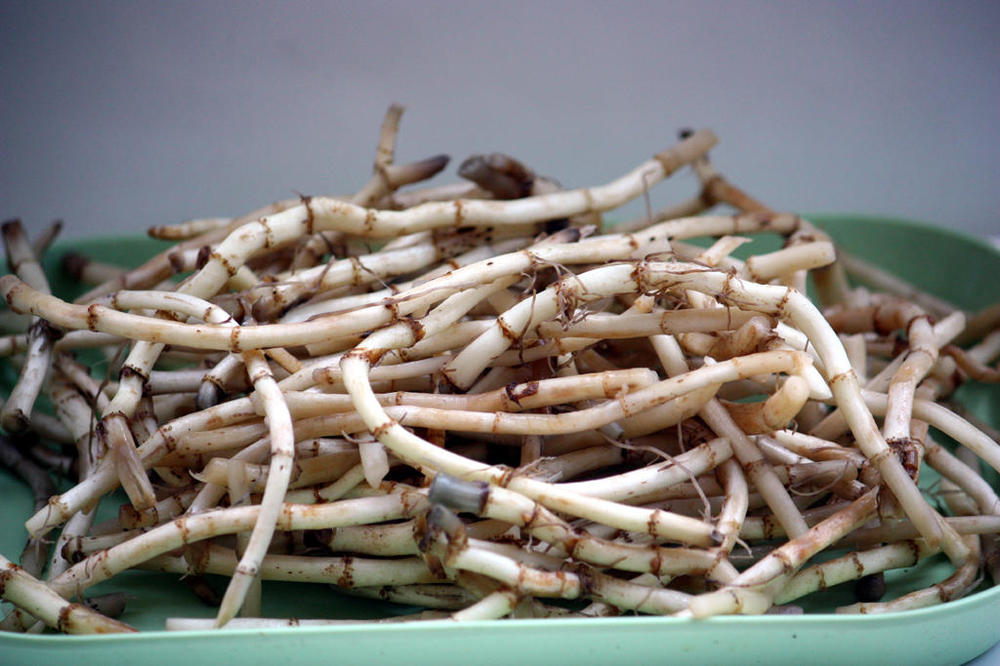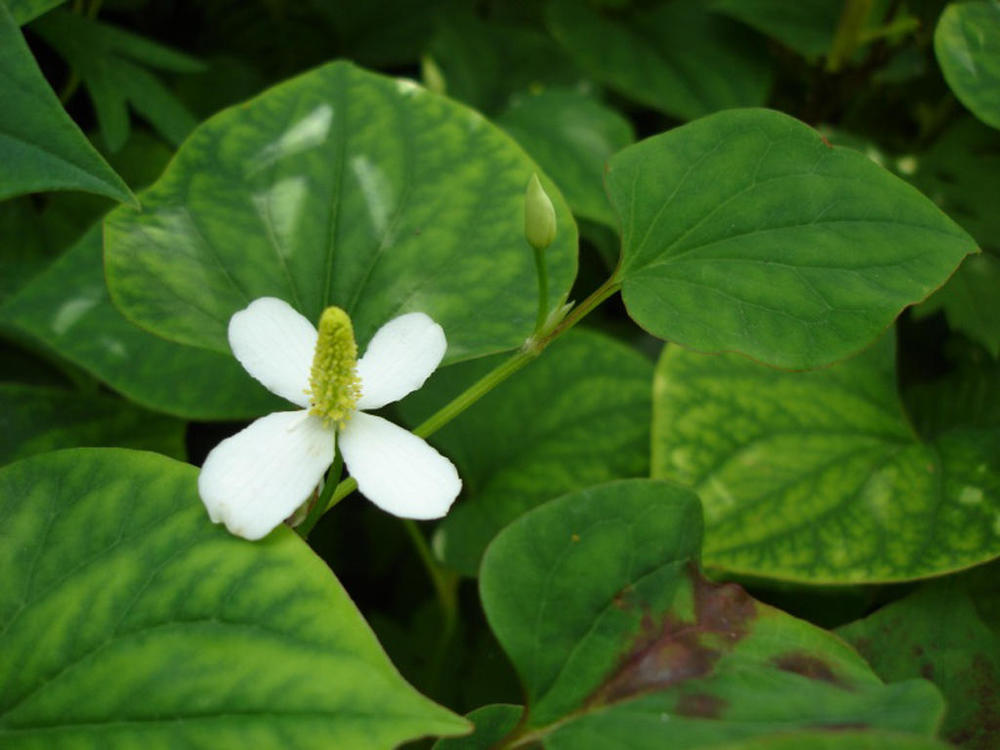Here's an odd one. At least it was to me when I first encountered it 22 years ago in Hunan province.
Houttuynia cordata
This is known in English as lizard's tail, fish mint, fish leaf, rainbow plant, chameleon plant, heart leaf, fish wort, or bishop's weed.
In Chinese, it is usually 鱼腥草/魚腥草 (Mand: yú xīng cǎo; Cant: jyu4*2 sing1 cou2) which means “fish smell grass”, which sounds delightful. Other names include 截儿根 (Mand: jié ér gēn; Cant: zit6 ji4 gan1), literally "stem young root", 猪鼻拱/豬鼻拱 (Mand: zhū bí gǒng; Cant: zyu1 bei6 gung2) literally "pig's nose snuffle" and 臭草 (Mand: chòu cǎo; Cant: cau3 cou2), literally "stinking grass". The latter name is confusingly also used for the unrelated herb, rue.
The leaves, flowers, stems and roots are all edible. I have eaten the leaves in Vietnam, served with bánh xèo. The leaves do have a faint fishy smell, but 'stinking' is an exaggeration. The leaves are also dried and used to make a 'tea' in Japan and Korea. The flowers are also used in teas.
.jpg.a7a9a474156838f910cf54864ddf4900.jpg)
Houttunyia Sprigs
Variegated Houttunyia
Houtuynia Flower
This file is licensed under the Creative Commons Attribution-Share Alike 3.0 Unported license.
Despite the weird names, these have little if any noticeable odour. They are served, often in a mild chilli sauce, at the beginning of banquets alongside peanuts and sunflower seeds. You know; something to keep you amused while waiting for the important people to turn up. It is sold in the sauce on the prepared salads counter in most supermarkets, as well as being sold au naturel.



.thumb.jpg.e52fd043ec0865da16b9b787d891f8b4.jpg)



